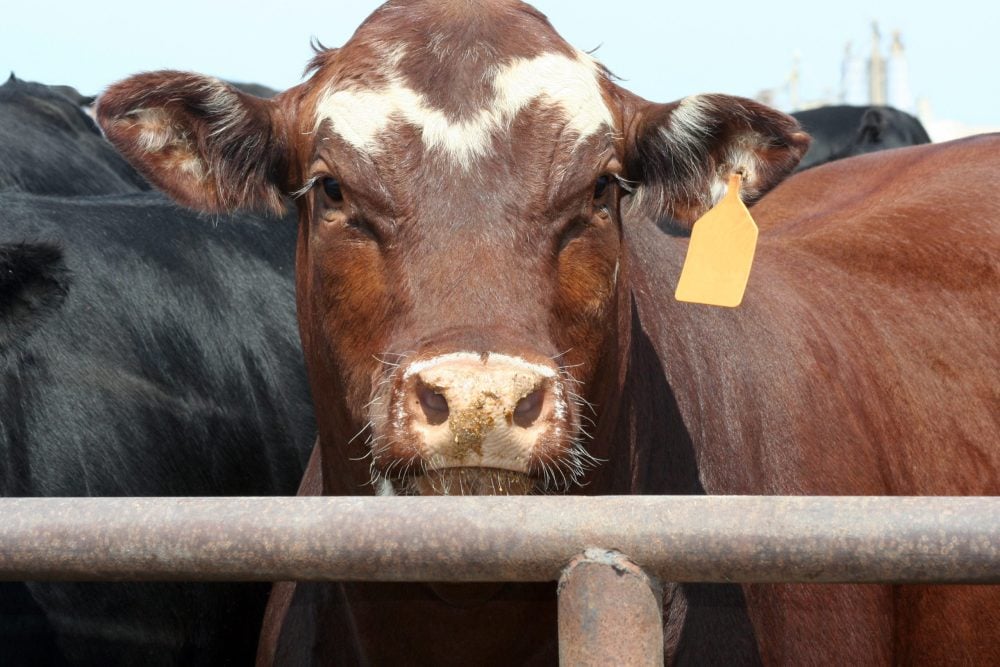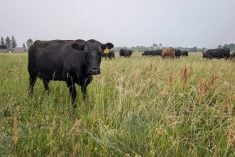(Resource News International) With no federally-approved hog
slaughtering facilities left in Saskatchewan,
hogs have found homes in Manitoba, Alberta and the U.S.,
according to industry participants.
“The closure of Maple Leaf’s Saskatoon hog slaughtering
facility at the end of May has resulted in producers in the
province looking elsewhere to market their annual production of
2.5 million to 2.6 million hogs,” said Brad Marceniuk, livestock
economist with Saskatchewan Agriculture and Food in Saskatoon.
Maple Leaf Foods closed its aging Mitchell’s Gourmet Foods hog slaughter plant in May and instead added a second slaughter shift
Read Also

U.S. livestock: Cattle futures plunge daily limits on beef price fears
Reuters — Most Chicago Mercantile Exchange live cattle and feeder cattle futures contracts fell their respective daily limits on Friday,…
But with the lack of slaughtering
facilities in Saskatchewan, producers have started to change over
their operations from developing slaughter-weight hogs to
weanlings or feeder pigs, Marceniuk said.
Out of the hogs produced in the province, roughly 300,000
were said to be feeders, he said. “That level was expected
to grow further yet.”
About 75 per cent of the remaining hogs in the province generally
are marketed to Brandon while the rest go to the Olymel facility at Red Deer, Alta., and to the U.S., he said.
“The marketings are very dependent on prices and how busy
the Maple Leaf plant in Brandon is, as well as the time of the
year,” he added.
Dan Hrapchak, general manager of the Saskatoon-based hog marketing agency SPI Marketing Group,
confirmed most of the hogs produced in the province are
being shipped to Brandon, but there has also been a jump in the
number of Saskatchewan hogs going as feeders into the
U.S.
He did not have any estimates on the numbers being shipped
to the U.S.
Neil Ketilson, general manager of Sask Pork, the
representative organization of all Saskatchewan pork producers,
estimated up to one million slaughter weight hogs were
likely to be shipped to Brandon during
calendar year 2007 while 225,000 slaughter weight hogs were
likely to be shipped to the U.S. in 2007.
He agreed that current feeder pig shipments to the U.S. were
producers in the process of shifting from the production of
slaughter ready hogs to feeders, that number was expected to
increase to 750,000 head on a yearly basis.
The cost of transporting the hogs will be the main reason
for producers to shift production from market-ready hogs to the
feeders. Transportation costs to outlets in Manitoba were said to
be $5 to $8 a head more than had the hog been destined to a
Saskatchewan facility. Shipments to the U.S. outlets for market-ready hogs were pegged by Ketilson at roughly $20 to C$23 per hog.
Weanling or feeder pig shipment costs were only in the $2 to
$3 per pig area.
Ketilson said work was underway to attract another
processor into the province to replace Maple Leaf.
He indicated that there has been some interest in
establishing a new facility, but because it was still early in
the process, “we would rather not comment on any developments at
this time.”















